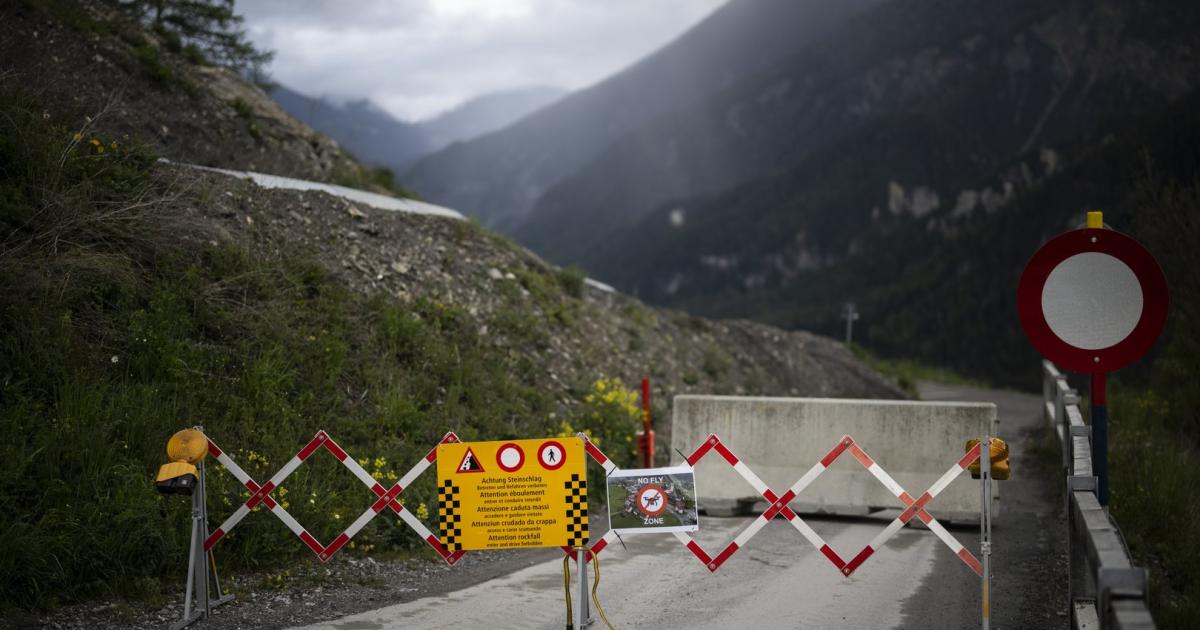On Friday night it went huge rockslide In the Brains slice in Switzerland far. For hours in the middle of the night, boulders slid loudly down the valley.
“Measurement data and first photo assessments indicate that much of the island has slipped away very quickly. There are no indications of damage in the village yet,” he told the person in charge. Albula municipality In the Grisons canton via Twitter at night.
➤ READ MORE: Evacuation: 2 million cubic meters of rock slide towards Schweizer Dorf
At midnight, the blue stage was triggered. Means: It is not permissible to enter the village under any circumstances.
While the extent of the damage could not be fully assessed during the night, it became clear after dawn that a stream of rocks and debris had just missed the Swiss mountain village of Brienz.
“But the boulders stopped only before the village,” says the community.
It is currently unclear how much of the approximately 2 million cubic meters of shale material has been lost.
Roughly 80 residents of Brienz were not in danger, and the village had already been evacuated as a precaution in May.
© Photo: APA / AFP / ARND WIEGMANN
Ruins up to 12 meters high
According to community spokesman Christian Gartmann, debris piled up to a height of 12 meters during the night.
A street was completely buried. “We now assume that, unfortunately, that was not all,” he told the news agency. Keystone SDA.
According to experts, the mountain above Brienz has been in motion for thousands of years. Landslide has accelerated sharply in the last 20 years and more recently.
It was only on Tuesday that a rockslide occurred on a slope that was in danger of falling. Since then, experts have been predicting a change in the dynamics of the mountain. And so it happened: the latest measurements showed speeds of 40 meters per day. This is equivalent to ten times the speed readings taken the morning of the same day.”
Tour de Suisse: Postponement of the start of the stage
The highest level of danger has been declared. Two roads and a railway line were closed in the Albula area.
That is why the sixth stage of the Tour de Suisse cycling race on Friday had to be moved from La Pont to Chur.
Rockfall in Galtur
In the Silvretta Group in the municipality of Galtür (Landeck district), a massive rock fall occurred only on Sunday.
More than 100,000 cubic meters of material thundered over the broad waters in the northwest side area of the southern Fluchthorn in the direction of Jamtalhütte. According to the geology of the state, the reasons are likely to be the rising permafrost, and more rock fall cannot be ruled out in the high alpine region. No one was hurt.
➤ READ MORE: Climate change is likely to be the cause of the massive rock avalanche in Tyrol
Rock falls, rock falls and mudslides are the result of receding ice
The massive rockslide occurred in the Silvretta range, which on Sunday apparently brought the southern part of the Flüchthorn halfway around the summit, including the summit cross, after a period of “record melt” for Austrian glaciers.
This was a result of the annual report on glaciers published by the Austrian Alpine Association (ÖAV) in March. Then the State of the Climate Report 2022, published in May, warned of the consequences of glacier retreat in the future.
Thawing and melting of permafrost causes rockfall, rockfall and mudslides. The annual report, created on behalf of the Climate and Energy Fund and the federal states by the Austrian Climate Change Center (CCCA) in collaboration with Geosphere Austria and Boku, not only stated that 2022 was the fourth warmest summer since measurements began in the mountains. Combined with low snow cover and plenty of desert dust, local glaciers lost an average of three meters of ice last year — twice the mass of the average for the past 30 years.
“We have to assume that glaciers will halve in the next 20 years – whatever scenario one assumes. We can no longer prevent that,” said Herbert Formeyer, scientific director of the report and professor at the Institute of Meteorology and Climatology (Herbert Formeyer). Boku), cited at the time of publication of the report.
The consequences of dips are an increase in material in what are called gravitational or mass motion processes—the collective term for landslides, mudslides, mountain or rock falls, and avalanches.

“Food practitioner. Bacon guru. Infuriatingly humble zombie enthusiast. Total student.”







More Stories
Once again protests in Georgia against the “Russian” law.
Work to extinguish a major fire in Berlin is still ongoing
Parliamentary Week 6-10 May 2024 (PK0431/05/03/2024)